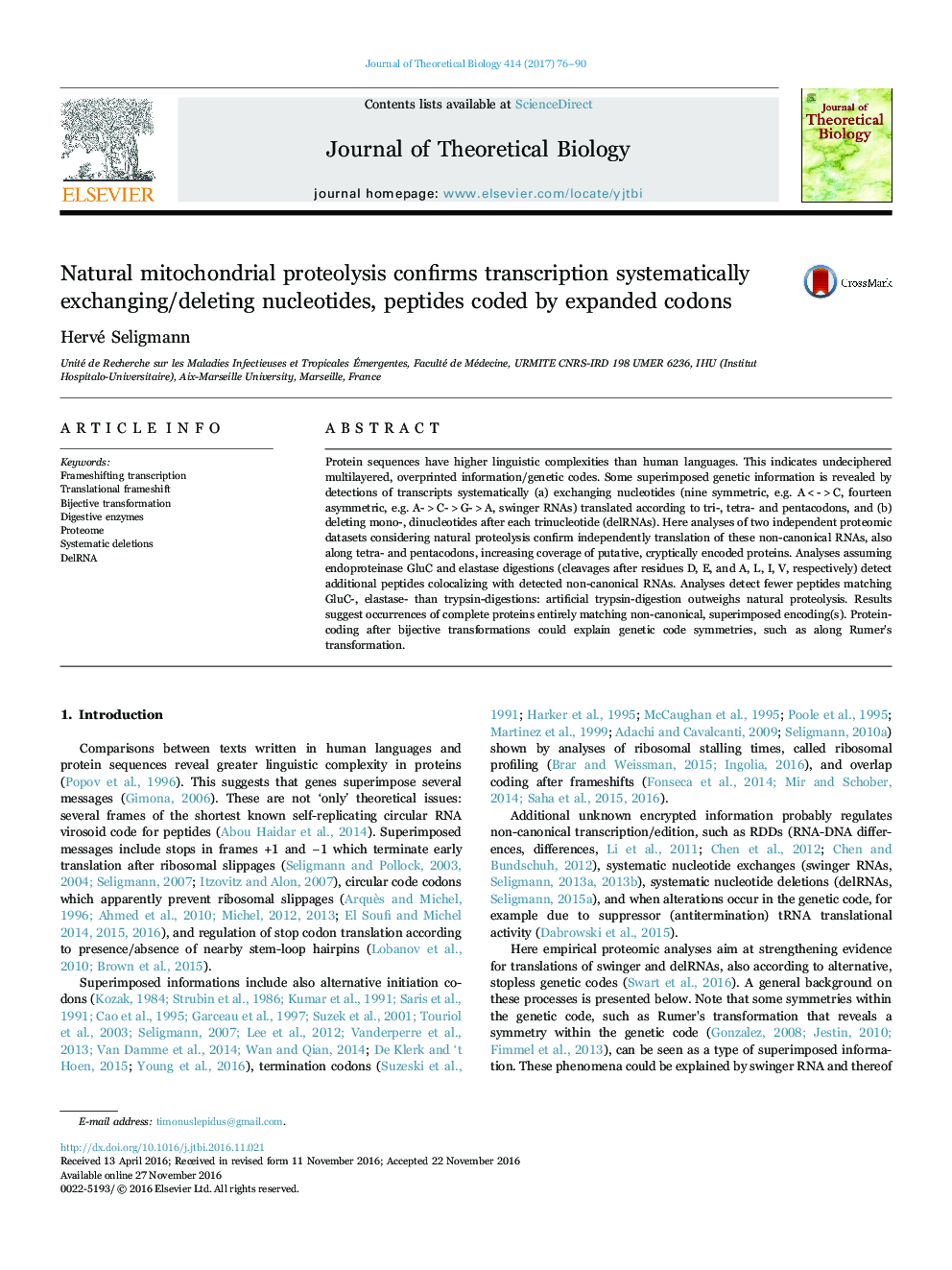| Article ID | Journal | Published Year | Pages | File Type |
|---|---|---|---|---|
| 5760215 | Journal of Theoretical Biology | 2017 | 15 Pages |
Abstract
Protein sequences have higher linguistic complexities than human languages. This indicates undeciphered multilayered, overprinted information/genetic codes. Some superimposed genetic information is revealed by detections of transcripts systematically (a) exchanging nucleotides (nine symmetric, e.g. A<->C, fourteen asymmetric, e.g. A->C->G->A, swinger RNAs) translated according to tri-, tetra- and pentacodons, and (b) deleting mono-, dinucleotides after each trinucleotide (delRNAs). Here analyses of two independent proteomic datasets considering natural proteolysis confirm independently translation of these non-canonical RNAs, also along tetra- and pentacodons, increasing coverage of putative, cryptically encoded proteins. Analyses assuming endoproteinase GluC and elastase digestions (cleavages after residues D, E, and A, L, I, V, respectively) detect additional peptides colocalizing with detected non-canonical RNAs. Analyses detect fewer peptides matching GluC-, elastase- than trypsin-digestions: artificial trypsin-digestion outweighs natural proteolysis. Results suggest occurrences of complete proteins entirely matching non-canonical, superimposed encoding(s). Protein-coding after bijective transformations could explain genetic code symmetries, such as along Rumer's transformation.
Related Topics
Life Sciences
Agricultural and Biological Sciences
Agricultural and Biological Sciences (General)
Authors
Hervé Seligmann,
